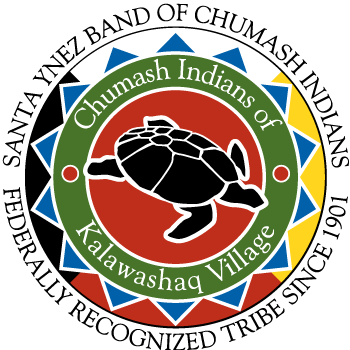SANTA YNEZ BAND OF CHUMASH INDIANS, UCSB HOST PANEL DISCUSSIONS ON NAGPRA
SANTA YNEZ, CA – July 8, 2024 — The Santa Ynez Band of Chumash Indians partnered with UCSB Thursday for a free, one-day NAGPRA/CALNAGPRA workshop in the Chumash Casino Resort’s Samala Showroom to help California Native American tribes, museums, institutions and universities navigate recent updates to the Native American Graves Protection and Repatriation Act (NAGPRA).
NAGPRA, a U.S. federal law enacted on November 16, 1990, regulates the respectful return of Native American remains and cultural items to lineal descendants and culturally affiliated American Indian tribes, Alaska Native villages and Native Hawaiian organizations.
The workshop featured panel discussions on both state and federal repatriation laws, requirements, responsibilities and best practices when working with tribes. Participants learned more about the recently updated NAGPRA regulations and how institutions and Native American tribes can work together for a more seamless repatriation process of funerary objects, sacred objects and objects of cultural patrimony to tribes. Topics of conversation included repatriation deadlines, consultation, what tribes are included, repatriation statements, contact lists and past examples of positive and negative repatriation experiences.
“Discussions and workshops are important and help build productive relationships between tribes and institutions,” said Nakia Zavalla, Cultural Director for the Santa Ynez Band of Chumash Indians. “Events like these ultimately make repatriation a smoother process.”
UCSB partnered with the Santa Ynez Band of Chumash Indians to host Thursday’s workshop.
“We are in a new era where repatriation and tribal expertise are finally at the forefront of conversations at museums and universities across the country,” said Dr. Hugh Radde, Repatriation Coordinator for UCSB. “UCSB is extraordinarily proud to co-sponsor this important event with Santa Ynez Band of Chumash Indians, which allows practitioners to come together to learn about NAGPRA, network with colleagues, and develop relationships with tribal community members.”
Earlier this year, revisions to NAGPRA went into effect to help expedite the repatriation process. These revisions grant tribes the right to decide what cultural objects are displayed and retained by institutions across the country, rather than what has often been an institution's unilateral power over its collections. The NAGPRA updates emphasize the requirement of all federal agencies, museums, institutions, universities, colleges, state agencies and local agencies that receive federal funds, to identify all Native American human remains, funerary items, and objects of cultural and sacred significance in their collections, to research the tribal owner(s), and to repatriate them.
The Federal Register, which is the official journal of the federal government of the U.S. that contains government agency rules, proposed rules and public notices, summarizes these revisions as the following:
This final rule revises and replaces definitions and procedures for lineal descendants, Indian Tribes, Native Hawaiian organizations, museums and federal agencies to implement the Native American Graves Protection and Repatriation Act of 1990. These regulations clarify and improve upon the systematic processes for the disposition or repatriation of Native American human remains, funerary objects, sacred objects or objects of cultural patrimony. These regulations provide a step-by-step roadmap with specific timelines for museums and federal agencies to facilitate disposition or repatriation. Throughout these systematic processes, museums and federal agencies must defer to the Native American traditional knowledge of lineal descendants, Indian Tribes and Native Hawaiian organizations. For more information, visit: https://www.federalregister.gov/documents/2023/12/13/2023-27040/native-american-graves-protection-and-repatriation-act-systematic-processes-for-disposition-or
“Our tribe is encouraged by the recent movement we’ve seen as a result of these new NAGPRA rules, and we hope it continues,” said Kenneth Kahn, Tribal Chairman for the Santa Ynez Band of Chumash Indians. “We have dedicated, knowledgeable members of our community who have worked closely with universities on past repatriation efforts, and they’re looking forward to consulting with institutions and museums on their exhibits going forward.”
The event featured speakers and participants from various agencies and institutions, including Nakia Zavalla, Cultural Director, for the Santa Ynez Band of Chumash Indians; Kathleen Marshall, Elders Councilmember for the Santa Ynez Band of Chumash Indians; Dr. Wendy Teeter, Cultural Resources Archeologist for the Santa Ynez Band of Chumash Indians; Buffy McQuillen, Tribal Historic Preservation Officer for the Federated Indians of Graton Rancheria; Melanie O’Brien, Program Manager for the National NAGPRA Program; Allison Fischer Olson, Repatriation Coordinator for the University of California, Los Angeles; Alexandra Lucas, Repatriation Coordinator for the University of California, Berkeley; Dr. Hugh Rudde, Repatriation Coordinator for the University of California, Santa Barbara; and Michelle Carr, Chief Council for the Native American Heritage Commission.
The Santa Ynez Indian Reservation is located in Santa Barbara County and was established and officially recognized by the federal government on December 27, 1901. Today, the Santa Ynez Band of Chumash Indians remains the only federally recognized Chumash tribe in the nation. The tribe is a self-governing sovereign nation and follows the laws set forth in its tribal constitution.
